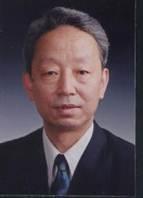
Education background
Bachelor of Computer Science and Technology, Tsinghua University, Beijing, China, 1970;
Master of Computer Science and Technology, Tsinghua University, Beijing, China, 1982;
Social service
Department of Computer Science and Technology, Tsinghua University: Vice Dean (1989-1991);
Institute of Information Science and Technology, Tsinghua University: Vice Dean (1997-2007);
State Key Laboratory of Intelligent Technology and Systems: Deputy Director, Director (1990-2001);
National 863 High-Tech Program: Member, Director of Intelligent Robot Committee (1995-1996);
National 863 High-Tech Program: Deputy Director of Advanced Manufacture and Automation Committee (2001-2006).
Areas of Research Interests/ Research Projects
Intelligent Robot
Information System
National Natural Science Foundation of China: Research on Distributed Coordination Control Method of Multi-Robot System based on Multi-Source Information Fusion (2006-2008);
National 863 High-Tech Program: Research on Assembly Robot Architecture (1992-1994);
Research Funding by City of Beijing: Online Tele-Education System (2009-2010);
Research Funding by City of Beijing: Social Platform for Online Learning and Emergency Response System (2009-2010).
Research Status
After graduation from Tsinghua University, I have been doing research on automatic control. I also work on information systems. In 1985, as a visiting scholar, I went to America to study robotics. When I came back in 1986, I started to focus on intelligent robot architectures. I have undertaken and led major projects, such as National 863 High-Tech Program, to research on architecture of assembly robots. My research group has developed an opening robot controller. In 1987, I joined the Intelligent Robot Committee of National 863 High-Tech Program right after it was established, and was later appointed to as its director. From that time on, I've been doing technological management work in the committee.
In recent years, I have done my best to combine different technologies and seek for breakthroughs. My research group is currently researching on "Online Tele-Education System", in which we expect to achieve one-on-one teaching. In fact, we are not able to afford enough teachers to teach students online at the same time. A virtual teachers approach was proposed. According to traditional CAD methods, it's very difficult to render the facial expression of a virtual human being in real time, so as to show its lip-rounding. In order to generate facial expression in real time, a numerical model of facial expression must be firstly established. Leveraging the modeling technique in robotics, we have selected 31 facial muscles to model facial expression. With the length of these facial muscles serving as control parameters, facial expression can be numerical as well. Our algorithm has been realized in computers and has successfully achieved real-time facial expression.
Honors And Awards
National 863 High-Tech Program: Outstanding Contribution Award (2001);
Distinguished Teaching Practitioner Award by City of Beijing (1993);
College Science and Technology Award by Ministry of Education, Second Class-Development of Robot Controller based on DSP (2002).
Academic Achievement
[1] Na, Meng; Zheng, Danian; Jia, Peifa .Modified Grid Algorithm for Noisy All-Sky Autonomous Star Identification. IEEE TRANSACTIONS ON AEROSPACE AND ELECTRONIC SYSTEMS, Vol. 45, 2009
[2] Na M, Yang B, Jia P F. Improved damped least squares solution with joint limits, joint weights and comfortable criteria for controlling human-like figures. IEEE International Conference on Robotics, Automation and Mechatronics, Chengdu, China, Jun. 2008.
[3]Meng Na ,Li Ding, Peifa Jia ,Teach and Playback of Realistic Target Reaching Movement of Virtual Human Upper Limb ,The Third International Conference on Autonomic and Autonomous Systems, Athens, Greece, June, 2007.
[4] Chen, Goudong, Jia, Peifa. Robust Decentralized Trajectory Tracking Control of Robot Manipulators Based on Extended State Observer. ACTA AUTOMATICA SINICA, 34(7): pp. 828-832, 2008 (In Chinese)
[5] Chen, Goudong, Jia, Peifa, Wang, Rongjun. Space Registration and Practice of a Brain Surgery Robot based on Optical Localization, Chinese Joural of Scientific Instrumen. 28(3): pp. 499-503, 2007 (In Chinese)